
8 minute read
New Directions
Shirley and Frank Dick stood behind the plow before Arthur Snyder and his horse team broke ground Aug. 4, 1980. The ceremony was at the site of the Society’s new Home O ce.
was increased to about an acre and a half in 1953, one year before the district was consolidated with the Adrian schools. This was the “Jackson property” purchased by the Society and added to the Snyder farm.
Advertisement
The Maynard cabin was abandoned when U.S. 223 was improved as a “plank” road. A new homestead was located on the new road. The buildings, then known as the Snyder Farm, were still standing when the Gleaner Board of Directors bought the property.
In the 150 years between the raising of the Maynard log cabin and the Gleaner building, the land changed very little. A 10-minute walk down the hill and along Wolf Creek revealed a scene John Maynard would recognize at once.
Plans for the new home offi ce proceeded rapidly. Buehrer and Stough, Toledo architects, were employed to design the building. Plans were completed and bids opened in July 1980. The Krieghoff -Lenawee Company of Adrian was awarded the contract and work started immediately. Financing was arranged through the issuance of $3 million in Lenawee County Economic Development bonds. The new headquarters was completed in the summer of 1981 and occupied by the offi ce force on Aug. 14. The transfer of 87 years’ worth of records and sophisticated computer equipment was diffi cult, but it was done with a minimum of disruption.
The Gleaner building is a symbol of the Society’s progress. The colonial design connects the Society to the country’s history while housing a modern, up-to-date business enterprise. The building has become a landmark in Adrian, sitting on a hill behind a pond adjacent to U.S. Route 223.
The Society experienced strong growth after Frank Dick became president. In 1980, the fi rst full year of his presidency, assets grew by a record $5 million. That was only the beginning. In 1983 assets increased by more than $10 million, followed by $22 million in 1985, $48 million in 1989, and $75 million in 1992. Every year through 1992 was a new record. It was the kind of growth never before seen by the Society.
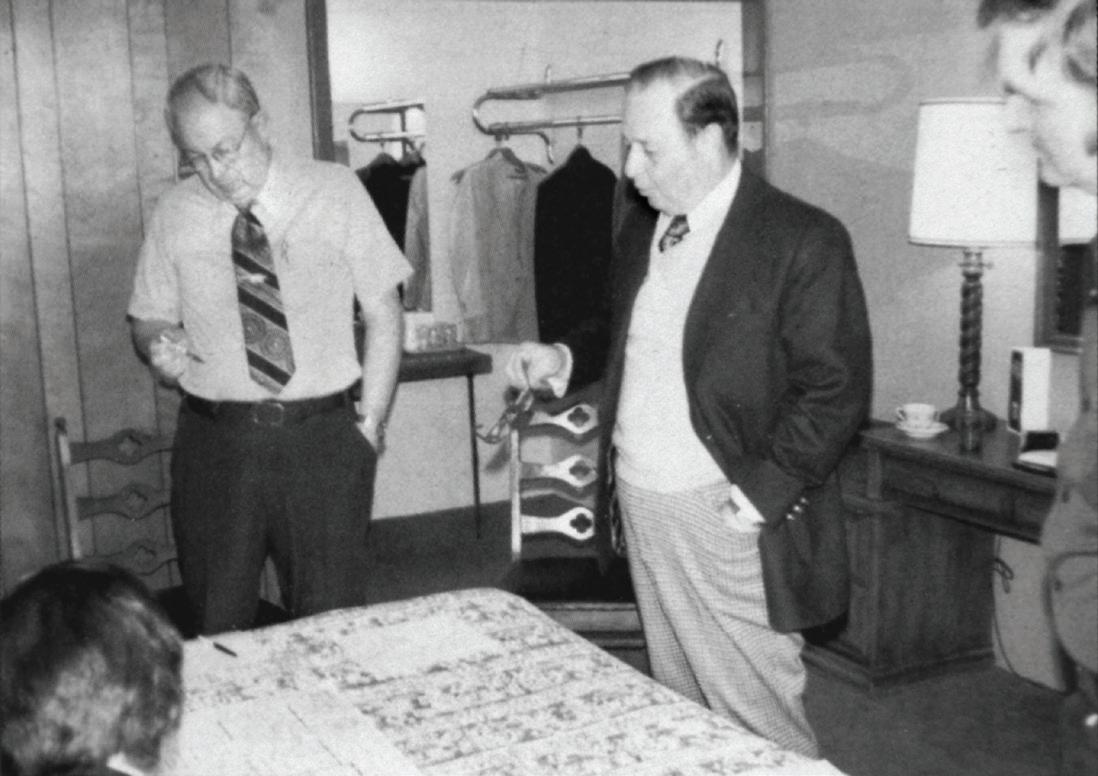
Board Vice Chairman Leonard Davis, left, and Board Member David Sutton, right, discuss the plans for the new Home O ce with architect Robert Stough, center, in April 1980. The Society moved into its new o ces Aug. 14, 1981. In 1982, the Society held a “Big Event” picnic to celebrate its relocation to Adrian. Janet Goulart, Coordinator Personnel Services, welcomed members and friends as “Huggie the Clown.”
In the fi rst 86 years (1894 to 1980) the Society had accumulated a little more than $46 million in assets. That amount was exceeded in a single year (1989).
The amount of insurance in force kept pace. The Society had $180 million of insurance on the books in 1979. By 1983 the amount had increased to nearly $204 million, followed by $652 million in 1989. The half-billion dollar mark was reached in 1988. The fi gures would have amazed the founders.
Why did the Society grow so fast in the 1980s? The decade was one of growth and expansion, far diff erent from the 1930s and 1940s. Low infl ation was coupled with the longest peacetime expansion in history. Tax laws were changed to create the Individual Retirement Account (IRA). That alone does not provide an explanation for the Society’s success.
There were several reasons, according to the offi cers. One was the attention to interest-sensitive products such as Universal Life insurance and tax-deferred annuities. Another was the expansion of the sales force. The Society has never employed its own (so-called “captive”) agents, instead contracting with independent agents and agencies. As new, attractive insurance and annuity products were developed, the independent sales force grew until it reached more than 400.
There are those who believe the construction of the new home offi ce building in Adrian contributed to the growth. They maintain the building aided the return to fraternalism and brought the Society together in a way impossible in the old headquarters in Birmingham. A beautiful Founder’s Room was included in the new building to house the Society’s historical records and to display the memorabilia collected over the decades.
In 1982, one year after the building was opened, a picnic for all Gleaner members was held on the site. The picnic tradition among Society members began as early as 1896 but this was the fi rst one to include members from all nine states served by the Society. A large crowd assembled for the two-day aff air July 31 and Aug. 1.
The event helped invigorate the Society and contributed to the feeling that Gleaner members were a part of a unique organization. It would not have been possible to hold such a large gathering at any of the previous offi ce buildings.
Those examining the Society from the outside have concluded that growth came from strong leadership, imagination, and hard work by a dedicated staff . On being interviewed, one employee said:

“The president is behind the growth and vigor of the Society. He is constantly on the prowl to nd new ways to serve the membership. He is what I call a progressive-conservative, a person who values the past but who nds ways to make the past serve the future. He is conservative in that once money is received it is not frittered away, and once a course of action is clear, he takes action immediately.”
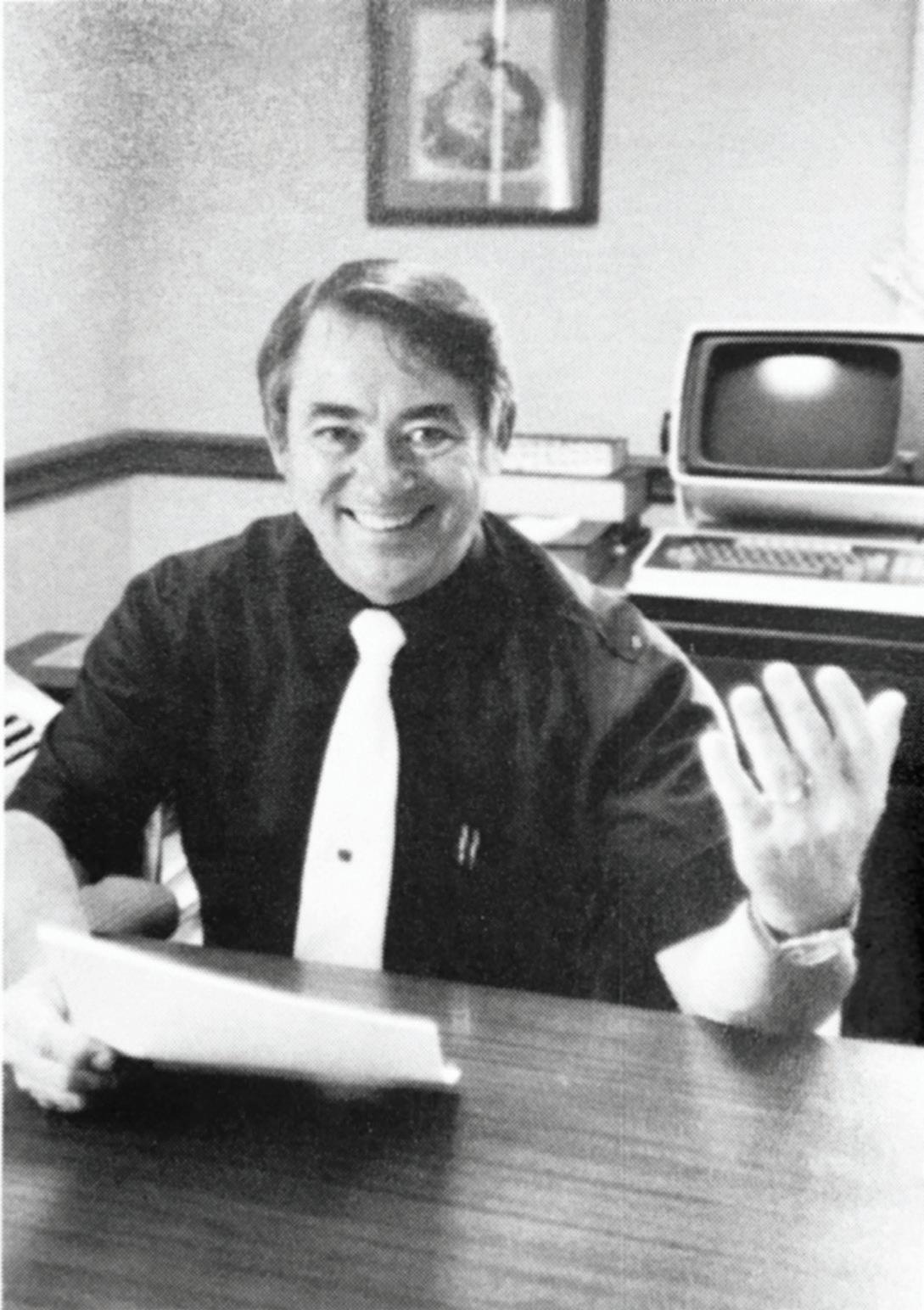
Gleaner Universal Life Insurance was a signi cant new product when introduced in 1984. Vice President Vernon Howard, pictured, described it as combining “the low-premium advantage of term insurance with the high-interest accumulations of an annuity while qualifying for the tax advantages of whole life.” It generated $33.8 million in applications in its rst two months.
In 1984, Gleaner Life introduced a signifi cant new product, Gleaner Universal Life Insurance. The new off ering was designed for both life insurance and retirement income. It took advantage of computers to track fl uctuating interest rates and to make automatic premium payments. Then-Vice President Vernon Howard described it as “an adjustable premium, whole life certifi cate. It combines the low-premium advantage of term insurance with the high interest accumulations of an annuity while qualifying for the tax advantages of whole life.” Universal Life proved to be very successful. For context, traditional Gleaner life insurance sales in 1984 totaled $24.8 million, while applications in the fi rst two months for Universal Life Certifi cates were $33.8 million. That sort of new growth helped the Society’s assets jump from $77 million in 1984 to almost $523 million in 1994 — its centennial year.
The Society also grew in other ways during the decade. Not only were new insurance products being devised, but an expansion of fraternal programs was undertaken.
One of the fi rst acts of the early Gleaner arbors was to establish a student scholarship fund. The fi rst Society scholarship program prior to 1900 was in place only for a few years and was dropped due to fi nancial strain. It was revived in 1979 with the enthusiastic support of the Board of Directors. The fi rst students were selected and awards presented in 1980. The winners were: Yvonne Navarro, Jeff rey Williams, Denise Froriep, Kelly Chard, and Melvin Hess Jr. The fi ve scholarships awarded the fi rst year had increased to 12 in 1990 and at one point rose to 126 in 2009. A guaranteed student loan program also was started in 1980. Frank Dick explained the reasons for the scholarship and student loan programs:
“These Gleaner fraternal bene ts for students will allow all Society members to share in alleviating one of the greatest fears of civilized people. It is the fear that talented and industrious minds will go unrecognized, unchallenged, and unrewarded for want of nancial assistance.”
Literally thousands of young Gleaner members have been helped in their search for higher education by the Gleaner Life Insurance Scholarship Foundation.
As President, Frank Dick also expanded or developed several other activities that fi t the era, including the Gleaner picnic tradition. Two annual picnics were held in Michigan each year, one for the Northern Michigan Regional Association and one for the Southern Michigan Regional Association. Others were held in Ohio, Illinois, Indiana and Nebraska. In 1989 a picnic was held at Bradenton, Florida, for members who live in the south during the winter. A spring training baseball event also was started in Arizona annually. Members enjoyed a Major League Baseball game, all-American lunch and visiting with one another.
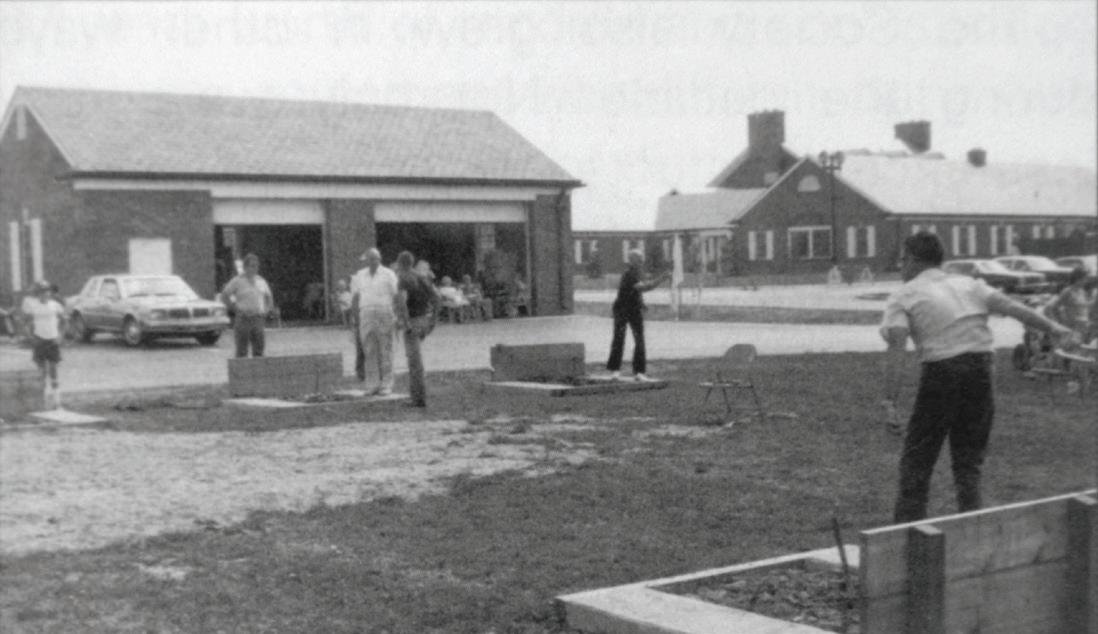
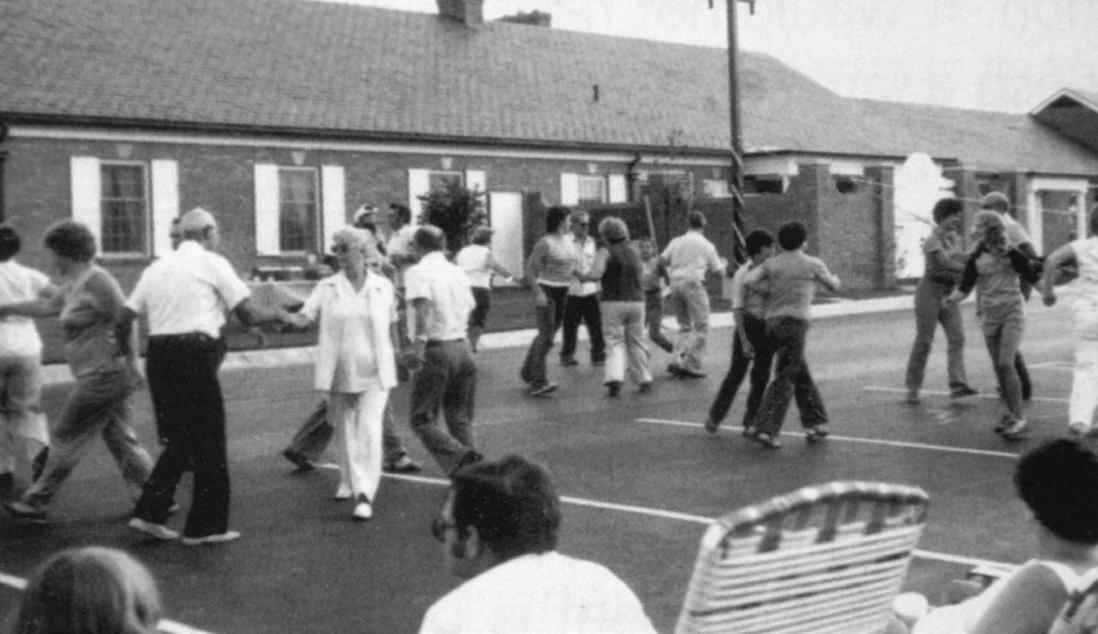
Pitching horseshoes was extremely popular at the “Big Event” picnic. Square dancing also was a well-attended activity.

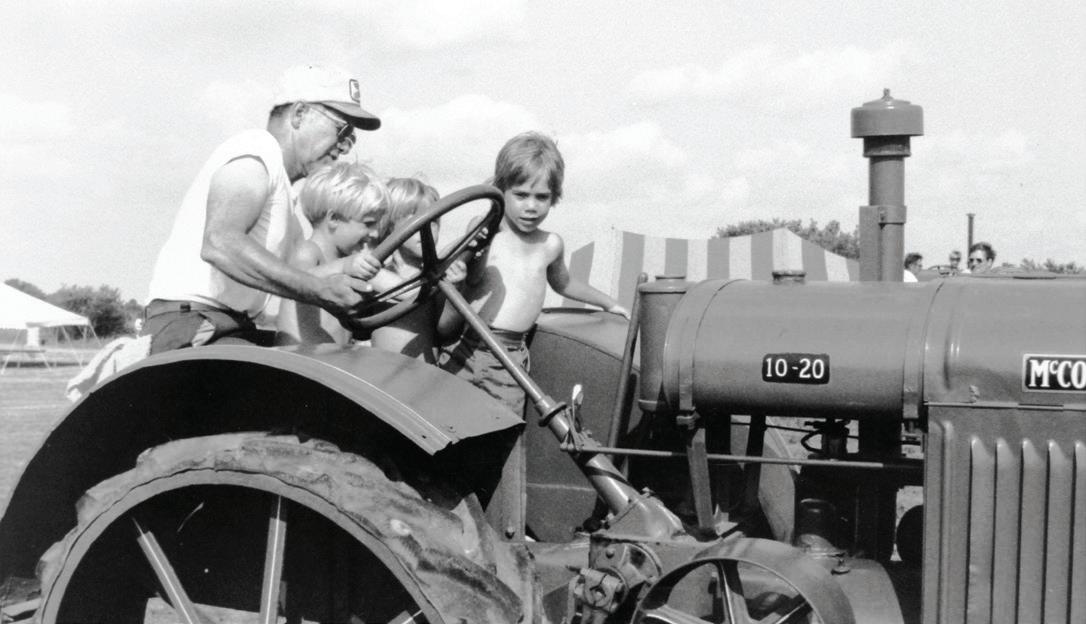
A member helps feed the swans and ducks on the Gleaner pond. Bill King gave youngsters rides on an antique tractor at the 1982 Big Picnic.
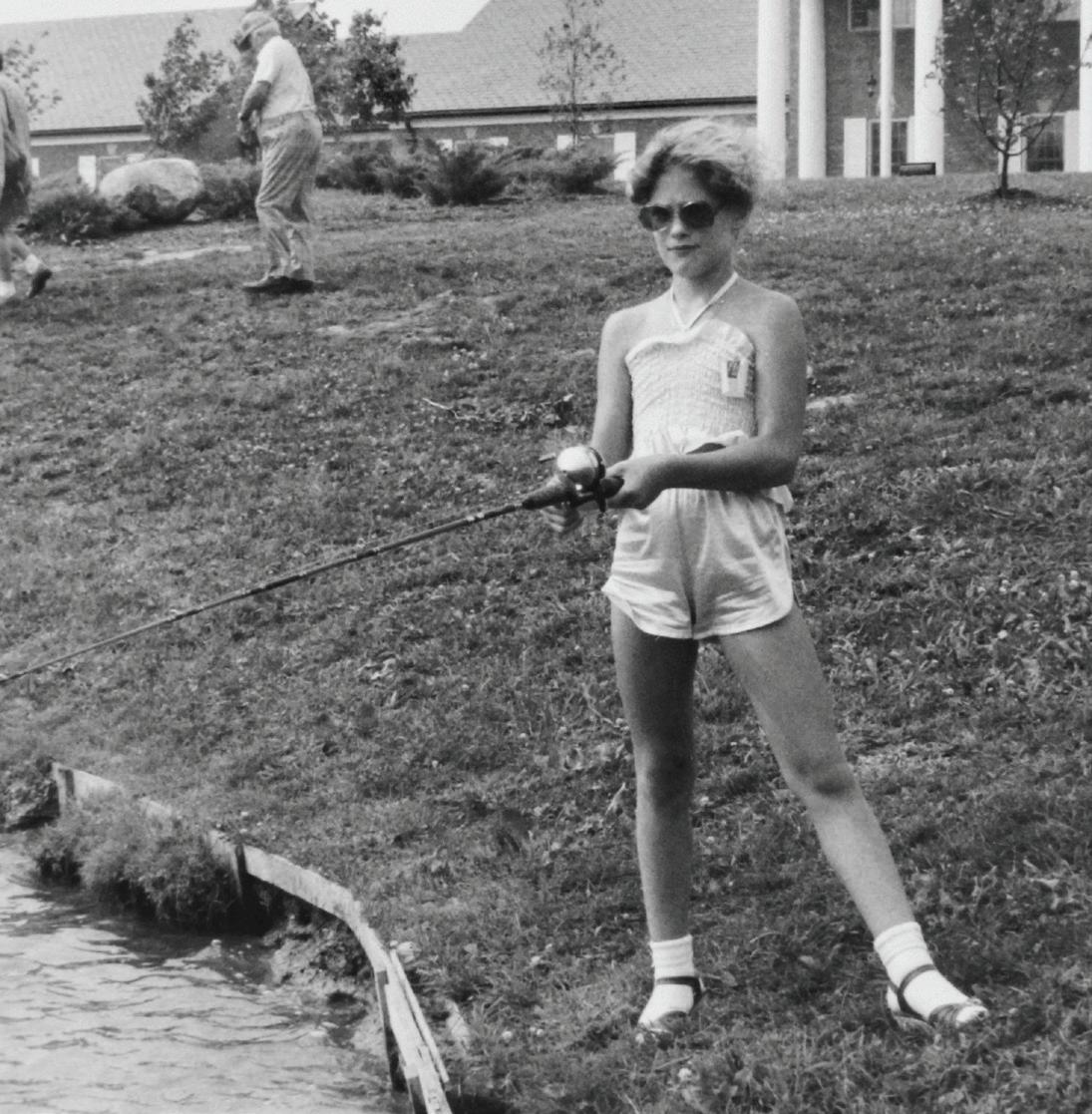
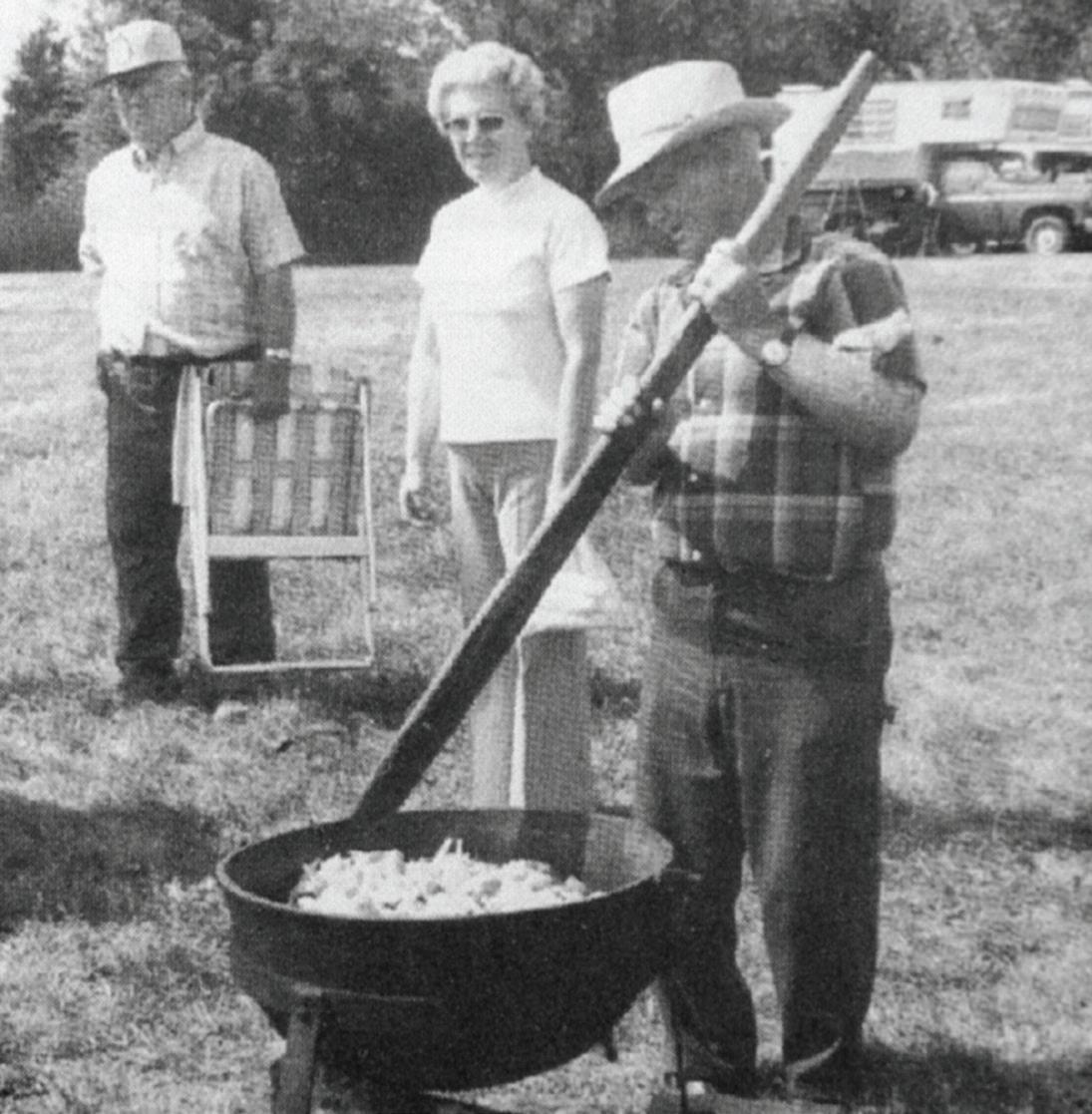
Annie Vascik caught the biggest sh at the “Big Event” picnic July 31, 1982, at the new Home O ce. Orville “Pony” Bennett of Harrison Arbor in Napoleon, Ohio, cooks hobo stew for the hungry.
95
96










